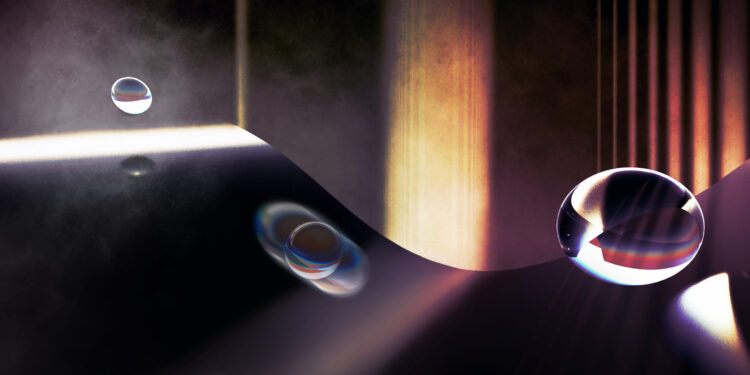A nanometric-sized glass bead evolving in a potential created by electrostatic or magnetic forces enters a state of macroscopic quantum superposition. Credit: Hélène Hainzer
Be fast, avoid the light and drive down a winding ramp: this is the recipe for a pioneering experiment proposed by theoretical physicists in a recent article published in Physical Examination Letters. An object moving in a potential created by electrostatic or magnetic forces should quickly and reliably generate a macroscopic quantum superposition state.
The boundary between everyday reality and the quantum world remains blurred. The more massive an object is, the more localized it becomes when it is made quantum by cooling its motion to absolute zero.
The researchers, led by Oriol Romero-Isart from the Institute for Quantum Optics and Quantum Information (IQOQI) at the Austrian Academy of Sciences (ÖAW) and the Department of Theoretical Physics at the University of Innsbruck, propose an experiment in which an optically levitating nanoparticle, cooled to its ground state, evolves in a non-optical (“dark”) potential created by electrostatic or magnetic forces. This evolution in the dark potential should quickly and reliably generate a macroscopic quantum superposition state.
Laser light can cool a nanometer-sized glass sphere to its ground state of motion. Left alone, bombarded by air molecules and scattering incoming light, these glass spheres quickly heat up and leave the quantum regime, thereby limiting quantum control. To avoid this, the researchers propose letting the sphere evolve in the dark, with the light off, guided only by non-uniform electrostatic or magnetic forces. This evolution is not only fast enough to prevent heating from stray gas molecules, but it also lifts extreme localization and unequivocally imprints quantum features.
The recent article in Physical Examination Letters also explains how this proposal circumvents the practical challenges of this type of experiment. These challenges include the need to perform rapid experimental experiments, minimal use of laser light to avoid decoherence, and the ability to quickly repeat experimental experiments with the same particle. These considerations are crucial to mitigating the impact of low-frequency noise and other systematic errors.
This proposal was discussed at length with the experimental partners of Q-Xtreme, an ERC Synergy Grant project. “The proposed method aligns with current developments in their laboratories and they should soon be able to test our protocol with thermal particles in the classical regime, which will be very useful for measuring and minimizing noise sources when the lasers are turned off,” specifies the theoretical team of Oriol Romero-Isart.
“We believe that although the ultimate quantum experiment will inevitably be challenging, it should be feasible because it meets all the criteria necessary to prepare for these macroscopic quantum superposition states.”
More information:
M. Roda-Llordes et al, Macroscopic quantum superpositions via dynamics in a large double-well potential, Physical Examination Letters (2024). DOI: 10.1103/PhysRevLett.132.023601
Provided by the University of Innsbruck
Quote: Observing macroscopic quantum effects in the dark (January 10, 2024) retrieved January 10, 2024 from
This document is subject to copyright. Apart from fair use for private study or research purposes, no part may be reproduced without written permission. The content is provided for information only.



